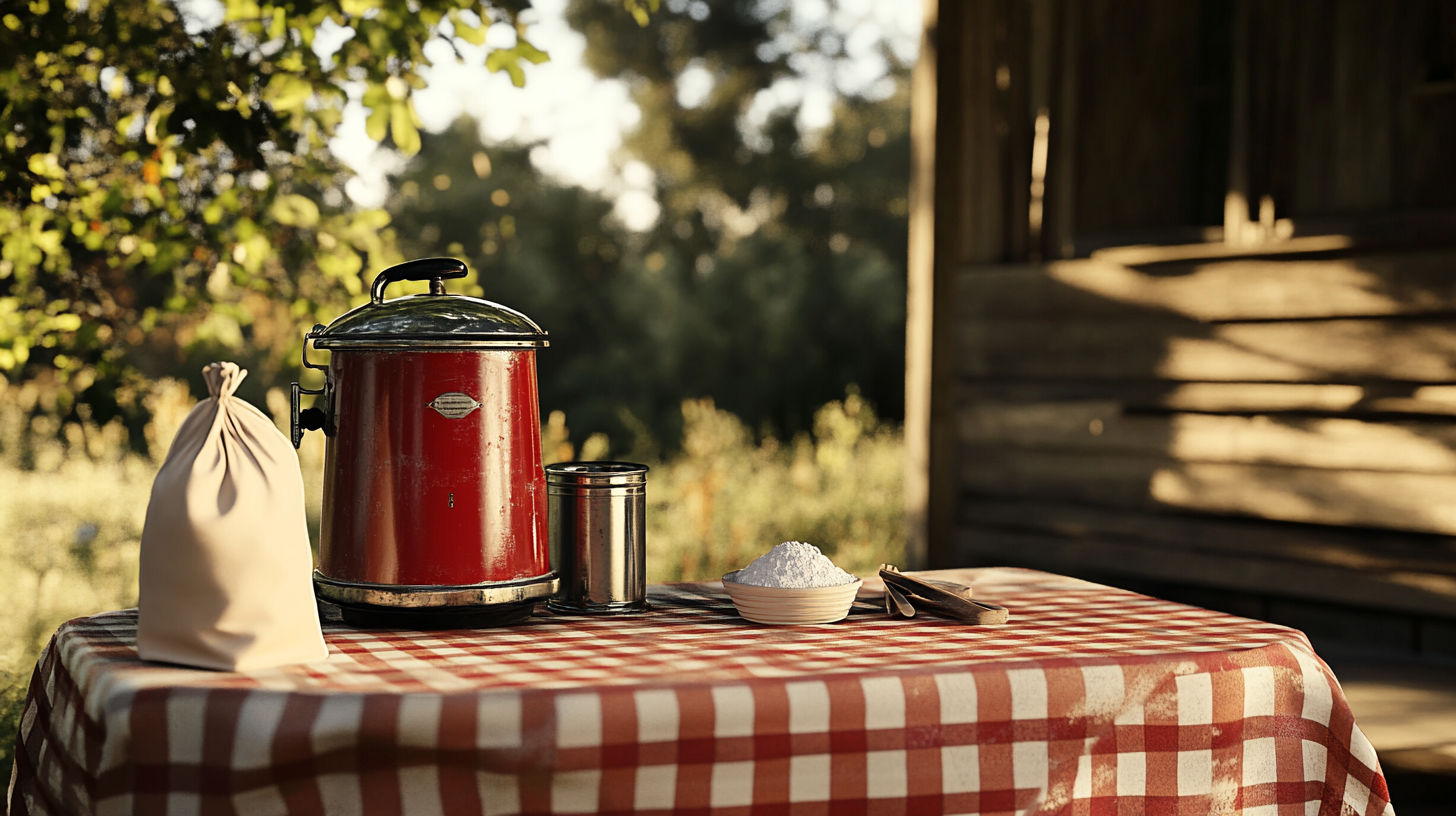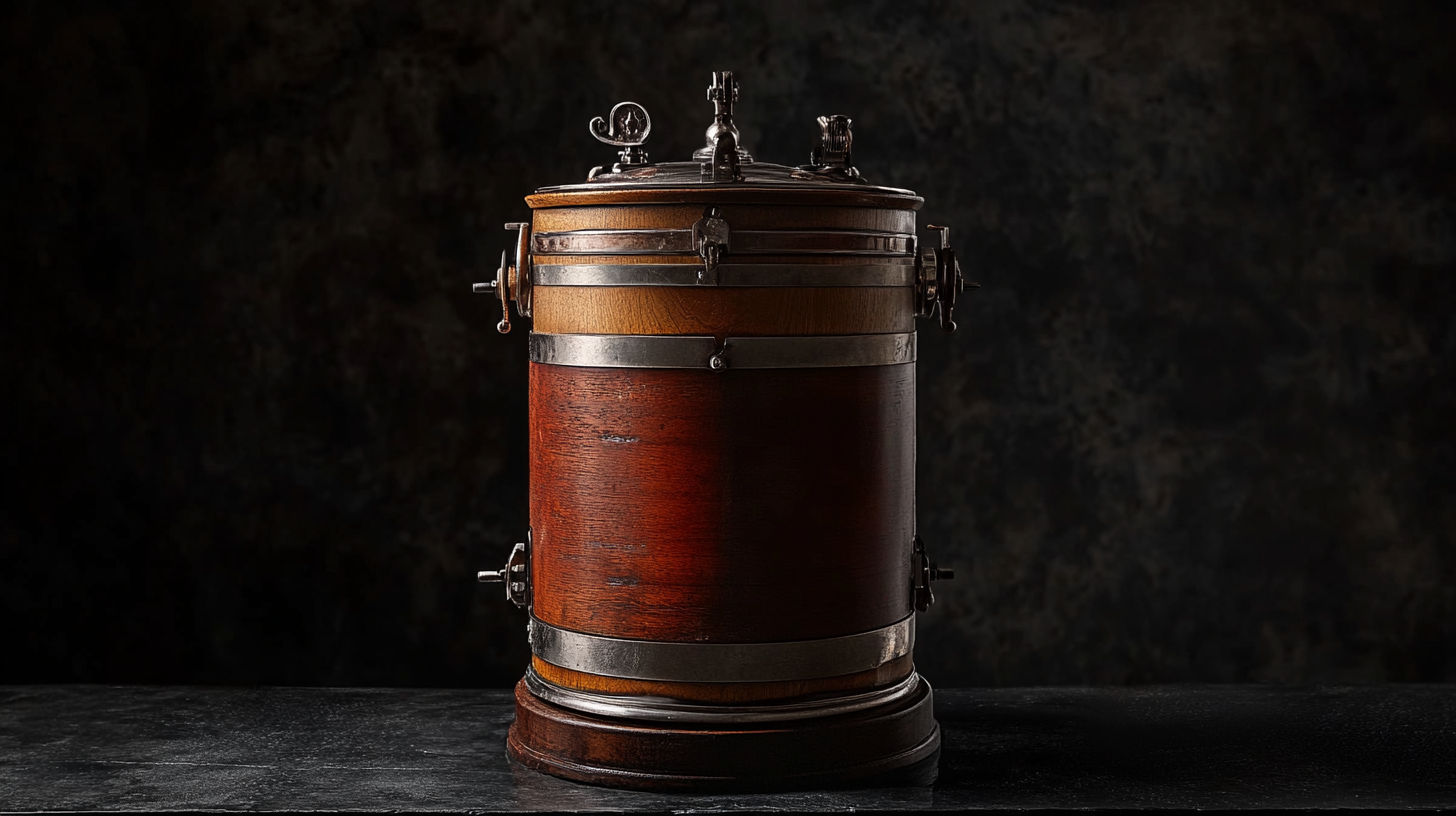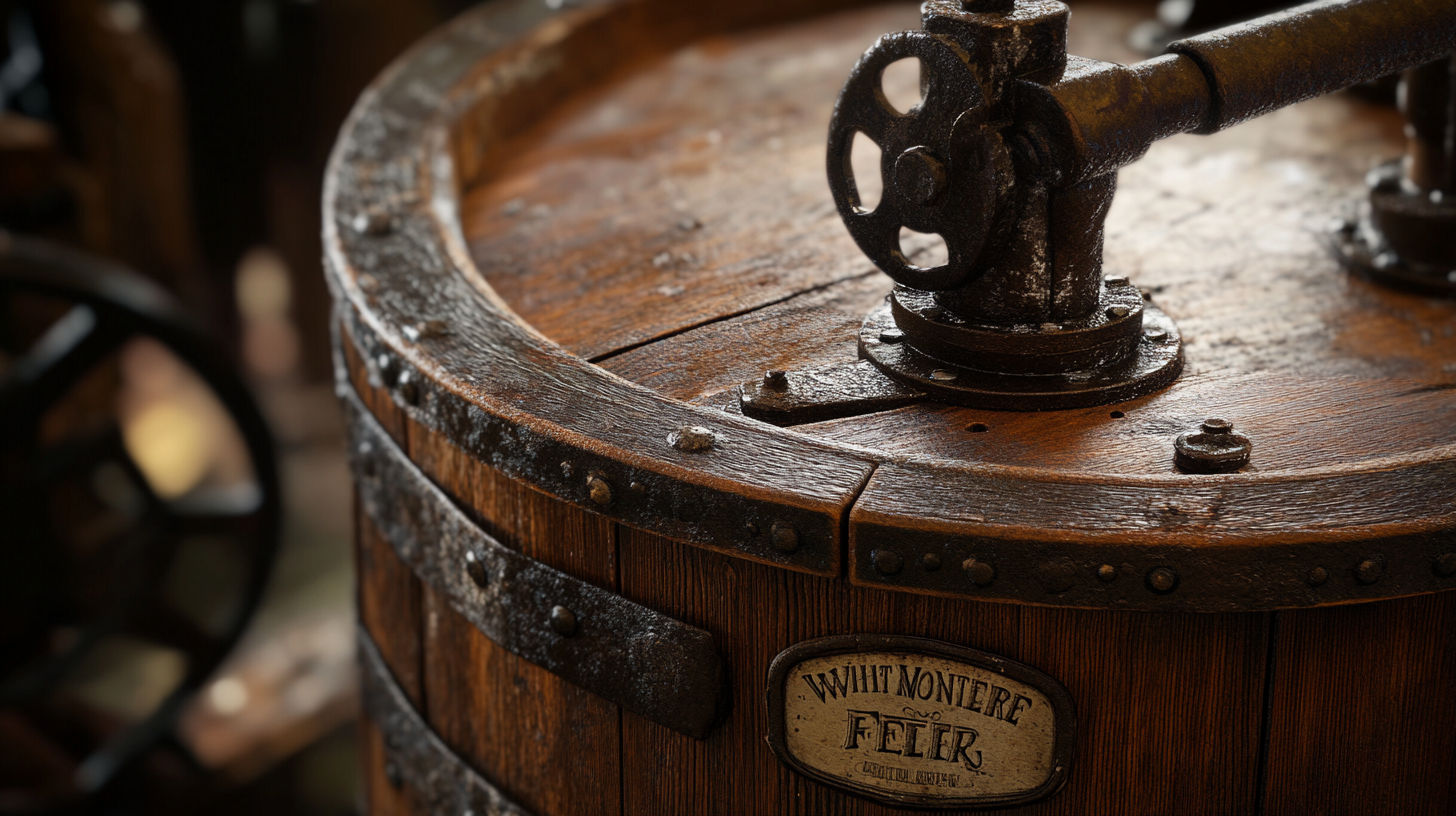Antique Ice Cream Maker Values: A Collector’s Price Guide
Few kitchen collectibles evoke the same nostalgia as antique ice cream makers. These charming devices – from hand-cranked wooden bucket models to early electric freezers – have become increasingly sought after by collectors and culinary history enthusiasts alike. Whether you’ve inherited a vintage ice cream maker or are considering adding one to your collection, understanding their value is essential.
In this comprehensive guide, we’ll explore the factors that determine antique ice cream maker values, identify the most collectible brands and models, and provide current market price ranges to help you assess what your vintage ice cream maker might be worth.
Table of Contents
The History of Ice Cream Makers
The creation of ice cream dates back centuries, but home ice cream making became accessible to average Americans in the mid-19th century with the invention of the hand-crank freezer. The first patented ice cream freezer in America was created by Nancy Johnson in 1843, featuring a wooden bucket, metal inner container, and a hand crank to rotate the paddle (dasher).
Evolution of Ice Cream Maker Technology
- 1843
First Patented Ice Cream Freezer
Nancy Johnson patents the first hand-cranked ice cream freezer in America, revolutionizing home ice cream production. - 1851
White Mountain Freezer Company Founded
One of the most significant manufacturers begins producing their iconic wooden bucket models that would become the standard for decades. - 1880s-1920s
Golden Age of Hand Crank Freezers
Companies like Alaska, White Mountain, and Gem produce numerous models with refinements to gearing and dasher designs. - 1920s-1950s
Transition to Electric Models
Electric motors begin to replace hand cranks, though many manufacturers continue to produce both types. - 1960s-1970s
Modern Countertop Models
Compact electric ice cream makers replace large wooden bucket designs for most home use.
The enduring appeal of vintage ice cream makers, particularly hand crank models, stems from both their aesthetic charm and the superior texture they often produce in homemade ice cream. For many collectors, these pieces represent a tangible connection to culinary traditions and summertime memories.
Factors Affecting Antique Ice Cream Maker Value
When assessing the value of an antique ice cream maker, consider these important factors:
Age and Rarity
Generally, ice cream makers from the 19th and early 20th centuries (1850s-1920s) command higher prices, especially if they’re from the earliest production periods of noted manufacturers. Limited production models or those with unusual features can significantly increase value.
Brand and Manufacturer
Certain manufacturers have established reputations for quality and innovation:
Most Valuable Antique Ice Cream Maker Brands
- White Mountain - The premier name in antique ice cream makers, with a reputation built since 1851
- Alaska Freezer Co. - Highly regarded for quality construction and durability
- North Pole - Distinctive models with loyal collector following
- Gem Manufacturing - Known for innovative mechanical designs
- Richmond Cedar Works - Quality wooden bucket models prized by collectors
- Peerless - Distinctive styling and reliable mechanisms
Condition
Condition dramatically impacts value, with complete, working units commanding substantial premiums over incomplete or damaged examples.
Condition Assessment Checklist
Use this checklist to evaluate the condition of a vintage ice cream maker
- Original wooden bucket intact with all staves and bands
- Complete dasher and hand crank mechanism present
- Gears function smoothly without excessive wear
- Interior metal canister free from significant rust or corrosion
- Original manufacturer's markings or decals visible
- All hardware present (screws, brackets, lid fasteners)
- For electric models: wiring and motor in safe, working condition
Completeness
A complete ice cream maker should include:
- Wooden bucket with all bands
- Metal inner canister with lid
- Dasher (the paddle that scrapes and aerates the mixture)
- Hand crank mechanism with properly functioning gears
- Original hardware and fittings
Missing components significantly reduce value, especially if they’re hard to replace like the dasher or specialized gear mechanisms.
Aesthetic Appeal
Ice cream makers with original paint, decorative bands, decals, or unusual designs often fetch premium prices. Particularly appealing models include those with:
- Multi-colored wooden staves
- Decorative metal bands
- Attractive original logos or decals
- Distinctive shapes or configurations
Mechanical Innovation
Models featuring unusual or innovative mechanisms – such as triple-motion dashers, unique gearing systems, or early adaptation of electric motors – typically command higher prices from collectors interested in the technical development of these kitchen appliances.
White Mountain Ice Cream Makers: The Gold Standard
Founded in 1851, White Mountain Freezer Company set the standard for ice cream maker quality and design for generations. Their ice cream makers are among the most sought-after by collectors, with certain models and production periods commanding premium prices.
Identifying White Mountain Models
White Mountain freezers can typically be identified by:
- The distinctive cast iron gear housing on top with “WHITE MOUNTAIN FREEZER” in raised lettering
- Triple-motion dasher mechanism (in most models)
- Cedar buckets with galvanized hoops
- Model numbers often stamped into the metal components
White Mountain Value Ranges
White Mountain Ice Cream Maker Values
Current market values based on recent sales data (2023)
</tbody>
</table>
A 1920s White Mountain ice cream freezer in excellent condition was recently found at a thrift shop for just $10.50, as shared by a collector on Reddit, demonstrating that bargains can still be found for knowledgeable collectors. This model would typically sell for $150-$200 in the current market.

Other Collectible Antique Ice Cream Maker Brands
Alaska Freezer Company
Manufactured in Winchendon, Massachusetts, Alaska freezers are known for their quality and durability. A 2-quart Alaska Freezer hand crank model recently listed on eBay for $67.49 (reduced from $74.99), demonstrating their consistent value in the collectibles market.
North Pole
North Pole freezers feature distinctive styling and were popular competitors to White Mountain. Complete models in good condition typically range from $75-$150.
Richmond Cedar Works
Known for their high-quality cedar buckets and reliable mechanisms, these ice cream makers range from $80-$200 depending on size and condition.
Gem Manufacturing
Gem produced innovative designs including some with flywheel mechanisms that made cranking easier. Values range from $75-$175 for complete, working examples.

Specialty and Unusual Ice Cream Makers
Engine-Powered Models
Some of the most valuable antique ice cream makers are those powered by hit-and-miss engines or other vintage power sources. These industrial or commercial models were often used at farms, country stores, or for community events.
Country Freezer Store offers hit-and-miss engine-powered 20-quart ice cream makers featuring antique John Deere engines, with prices reaching $3,000 for models with Maytag engines. These specialized pieces represent the high end of the antique ice cream maker market.
Commercial and Large-Capacity Models
Large commercial ice cream makers with capacities of 10-40 quarts were used by ice cream parlors, restaurants, and for community events. These substantial pieces often feature:
- Heavy-duty construction
- Larger wooden buckets with reinforced bands
- More powerful gearing systems
- Commercial-grade inner canisters
Due to their size and specialized nature, these can range from $200-$1,000+ depending on maker, condition, and historical significance.
Early Electric Conversions
The transition period from hand crank to electric motors (1920s-1940s) produced interesting hybrid models, some of which were factory-produced while others were aftermarket conversions. Complete, working examples of early electric ice cream makers from major manufacturers like White Mountain typically range from $100-$250.
Current Market Trends and Values
The market for antique ice cream makers has remained relatively stable in recent years, with particular strength in complete, working examples from major manufacturers. Here’s what we’re seeing in the current market:
General Value Ranges by Type
Current market values based on recent sales data (2023)
| Category | Price | Notes |
|---|---|---|
| Pre-1900 Models (4-8 qt) | $250-$500+ | Excellent condition with all original parts |
| Early 1900s-1920s (4-6 qt) | $150-$300 | Good working condition |
| 1930s-1950s Hand Crank | $75-$200 | Complete, functional units |
| Early Electric Conversion Models | $100-$250 | Working motor, good condition |
| Larger Sizes (12-20 qt) | $200-$400 | Premium for larger, commercial-sized units |
</tbody>
</table>
Where to Buy and Sell Antique Ice Cream Makers
Popular marketplaces for buying and selling vintage ice cream makers include:
- eBay - Large selection with prices ranging from $10 for basic models to $500+ for rare examples
- Etsy - Curated selection of vintage pieces, often with restored wooden components
- Facebook Marketplace - Local deals, often at lower prices (vintage wooden/metal ice cream makers recently listed for $10-$20)
- Antique shops and shows - Curated selections, often with higher prices but verified authenticity
- Auction houses - For rare or high-value examples
On Etsy, vintage hand-crank ice cream makers with unique features like padlocks “to keep cold and safe” have been listed for reasonable prices like $11.25 (on sale from $15), showing that entry-level collecting remains accessible.
Tips for Identifying and Authenticating Antique Ice Cream Makers
Manufacturer Marks
Look for:
- Cast markings on the gear housing
- Metal plates or decals on the bucket
- Stamps on the inner metal canister
- Embossed lettering on the dasher or crank handle
Dating Your Ice Cream Maker
Key indicators of age include:
- Construction methods - Hand-forged vs. machine-made components
- Materials - Type of wood, metal composition
- Design features - Triple motion vs. single motion dashers
- Patent dates - Often cast into metal components
- Transitional features - Hybrid designs during shift from hand-crank to electric
Assessing Condition and Completeness
For maximum value, ensure your ice cream maker has:
- Complete wooden bucket with all staves and bands
- Inner metal canister with proper lid
- Original dasher (the internal paddle)
- Complete gearing mechanism
- Handle with original grip
- All connecting hardware
Spotting Reproductions and Fakes
Be wary of:
- Unusually pristine “aged” wood
- Modern screws or fasteners
- Incorrect proportions or materials
- Missing manufacturer marks
- Components that appear to be from different makers
Restoration Considerations
When to Restore
Consider restoration when:
- The wooden bucket needs repair for structural integrity
- Metal components have surface rust but are fundamentally sound
- Minor components need replacement to make the unit functional
When to Preserve As-Is
Leave in original condition when:
- The piece has original paint or finish in good condition
- It has historical significance where patina matters
- Original decals or markings would be damaged by restoration
Restoration Best Practices
For wooden components:
- Clean gently with wood-appropriate cleaners
- Repair or replace individual staves if necessary
- Treat dry wood with appropriate oils or conditioners
- Maintain or restore metal bands carefully
For metal components:
- Remove active rust carefully
- Use appropriate metal preservatives
- Avoid aggressive wire brushing or grinding
- Maintain original finishes where possible
Collecting Strategy and Investment Potential
Focus Areas for Collectors
Consider specializing in:
- Single manufacturer - Collecting various models from White Mountain or another preferred maker
- Time period - Focusing on a specific era like Victorian or Art Deco
- Technological evolution - Collecting models showing the progression from hand-crank to electric
- Size variation - Gathering examples from miniature to commercial sizes
- Regional makers - Concentrating on ice cream makers from a specific geographic region
Investment Considerations
While collecting should primarily be driven by personal interest, investment potential is enhanced by:
- Focusing on top-tier manufacturers
- Prioritizing complete, functional examples
- Seeking rare or unusual models
- Preserving original documentation
- Maintaining appropriate storage conditions
Long-Term Value Trends
Antique ice cream makers have shown steady appreciation over decades, with premium examples from the 19th century seeing the strongest gains. Their dual appeal as both kitchen collectibles and Americana helps maintain strong demand in the collectibles market.
Common Questions About Antique Ice Cream Maker Values
What is the most valuable type of antique ice cream maker?
The most valuable antique ice cream makers are typically pre-1900 White Mountain models in excellent condition with all original components, or rare commercial-sized models powered by antique engines. Engine-powered models, particularly those with Maytag or John Deere hit-and-miss engines, can command prices of $3,000 or more. For standard hand-crank models, White Mountain freezers from the 19th century can reach $500+ when in exceptional condition.
Are antique ice cream makers worth collecting?
Yes, antique ice cream makers are definitely worth collecting for several reasons:
- They combine visual appeal with practical functionality
- Many models can still be used to make ice cream using traditional methods
- They represent an important aspect of American domestic history
- The market has shown steady appreciation for quality examples
- Entry-level collecting remains accessible with many models available under $100
Moreover, their charming aesthetics make them attractive display pieces in country kitchens, summer homes, or themed collections.
How can I tell how old my ice cream maker is?
To determine the age of your antique ice cream maker:
- Look for patent dates cast into metal components (though these indicate when the design was patented, not necessarily when your model was made)
- Research the manufacturer’s marks and logos, which often changed over time
- Examine construction techniques - hand-forged vs. machine-made parts
- Consider the transition features between technologies (early electric adaptations often modified hand-crank designs)
- Study the wood type and finish used in the bucket
You can also contact collector groups specializing in kitchen antiques for help with identification and dating.
What's the difference between valuable antique ice cream makers and basic vintage models?
The key differences between highly valuable antique ice cream makers and more common vintage models include:Valuable Antique Models:
- Made by premium manufacturers like White Mountain or Alaska
- Typically pre-1930s, with the most valuable being pre-1900
- Feature innovative mechanisms like triple-motion dashers
- Include original components and markings
- Often have distinctive decorative elements
Basic Vintage Models:
- Later production (1940s-1970s)
- Mass-produced with simpler mechanisms
- Made by lesser-known manufacturers
- More utilitarian designs with fewer decorative elements
- Often modified or missing original components
The price difference can be substantial, with premium antique models fetching $200-$500+ while basic vintage models might sell for $20-$75.
Are electric or hand-crank ice cream makers more valuable?
Generally, antique hand-crank ice cream makers are more valuable than vintage electric models, with a few exceptions:
- The earliest electric conversion models (1920s-1930s) that represent the transition between technologies can be quite valuable
- Rare or unusual electric models from major manufacturers may command premium prices
- Commercial or specialized electric models designed for businesses can be valuable
However, for most collectors, the classic wooden bucket hand-crank models, especially those from the 19th and early 20th centuries, remain the most sought-after and valuable types.
What's the best place to sell an antique ice cream maker?
The best venue for selling an antique ice cream maker depends on its value and your priorities:For High-Value Examples ($200+):
- Specialized antique auctions
- Reputable antique dealers
- eBay with detailed descriptions and photos
For Mid-Range Models ($75-$200):
- eBay
- Etsy (especially for restored examples)
- Antique malls or consignment shops
For Entry-Level Models (Under $75):
- Facebook Marketplace
- Local classified ads
- Yard sales or flea markets
The key to maximizing value is properly identifying, photographing, and describing your ice cream maker so potential buyers understand what they’re getting.
Conclusion: The Enduring Appeal of Antique Ice Cream Makers
Antique ice cream makers represent a perfect storm of collecting appeal: they’re visually attractive, mechanically interesting, practically useful, and deeply connected to fond memories of summer gatherings and family traditions. Their value continues to be sustained by this multi-faceted appeal.
For collectors, the market remains accessible at entry levels while offering premium opportunities for those seeking rarer models. From White Mountain’s iconic designs to unusual engine-powered commercial models, the diversity of antique ice cream makers provides collection possibilities for nearly any interest or budget.
Whether you’re assessing a family heirloom, starting a collection, or considering a purchase, understanding the factors that influence antique ice cream maker values will help you make informed decisions in this charming corner of the collectibles market.
External Resources for Antique Ice Cream Maker Collectors
eBay Hand-Crank Ice Cream Makers
Browse current listings of antique and vintage hand-crank ice cream makers to compare models, conditions, and pricing.
Etsy Vintage Ice Cream Maker Market
Curated selection of vintage and antique ice cream makers, often with detailed historical information and restoration work.
Homemade, Hand-Crank Ice Cream Makers | Amish Made
Modern reproductions of traditional designs, useful for comparing with authentic antique models.
Hit and Miss Engine Ice Cream Makers
Specialty shop featuring high-end collectible ice cream makers powered by antique engines.
Antique Ice Cream Maker Discussion on Reddit
Community discussion of a 1920s White Mountain Ice Cream Freezer find with collector insights.
Hand Crank Ice Cream Maker Auction Analysis
Detailed analysis of auction prices for vintage hand crank ice cream makers with comparative value information.
Get a Professional Appraisal
Unsure about your item’s value? Our certified experts provide fast, written appraisals you can trust.
- Expert report with photos and comps
- Fast turnaround
- Fixed, upfront pricing
No obligation. Secure upload.
| Category | Price | Notes |
|---|---|---|
| Pre-1900 Hand Crank (Major Brands) | $200-$500+ | Excellent condition with complete mechanism |
| 1900-1930s Hand Crank (Major Brands) | $75-$250 | Good working condition |
| 1900-1930s Hand Crank (Lesser Brands) | $40-$150 | Complete, functional units |
| Early Electric Models (1930s-1950s) | $50-$200 | Safe, working electrical components |
| Engine-Powered Commercial Models | $500-$3,000+ | Depending on engine type and condition |




